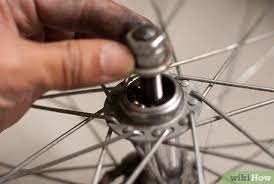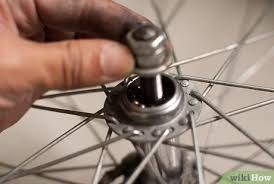Bicycle wheel bearings are essential components that contribute to the smooth and efficient movement of a bicycle. These small, often unnoticed parts play a significant role in the overall performance, speed, and longevity of the bike. This article explores the types of bicycle wheel bearings, their construction, how to choose the right ones, and tips for maintenance. Check out: bicycle wheel bearings
What Are Bicycle Wheel Bearings?
Bicycle wheel bearings are precision-engineered devices that fit within the hubs of the wheels, allowing them to rotate with minimal friction around the axle. Properly functioning bearings ensure a smooth ride, reduce wear on other components, and enhance the bike's performance.
Types of Bicycle Wheel Bearings
There are two main types of bearings used in bicycle wheels:
- Cup and Cone Bearings:
- Construction: Consist of ball bearings that run in a cup-shaped race inside the hub, held in place by a cone that screws onto the axle.
- Adjustability: Can be adjusted for optimal performance and longevity.
- Durability: Known for their ability to withstand heavy loads and impacts.
- Cartridge Bearings:
- Construction: Self-contained units where the balls, races, and lubricant are all enclosed within a sealed cartridge.
- Maintenance: Generally considered maintenance-free, as they are sealed to keep out dirt and moisture.
- Replacement: Easier to replace than to service, making them a popular choice for modern bicycles. Visit here: wheel bearings bike
Bearing Construction
Bicycle bearings are made up of several key components:
- Balls: Typically made of steel or ceramic, these rolling elements reduce friction.
- Races: The surfaces on which the balls roll. In cup and cone bearings, these are the cups and cones; in cartridge bearings, these are the inner and outer races.
- Cage: Keeps the balls evenly spaced and in place.
- Seals/Shields: Protect the bearings from dirt, moisture, and debris.
Bearing Maintenance
Proper maintenance is key to extending the life and performance of your bicycle wheel bearings:
- Regular Cleaning:
- Tools: Use appropriate cleaning tools like degreasers, brushes, and rags.
- Procedure: Remove the bearings (if serviceable), clean thoroughly to remove dirt and old grease, and let them dry completely.
- Lubrication:
- Lubricants: Apply a suitable bearing grease or lubricant to ensure smooth operation.
- Frequency: Lubricate bearings after cleaning or if they start to feel rough or noisy.
- Inspection:
- Regular Checks: Periodically inspect bearings for signs of wear, such as roughness, noise, or play in the wheel.
- Replacement: Replace worn or damaged bearings to maintain optimal performance.
Conclusion
Bicycle wheel bearings are essential for a smooth and efficient ride, significantly impacting speed, control, and comfort. Understanding the different types of bearings, their construction, and how to maintain them can help you choose the right ones for your bike and ensure they remain in top condition. Whether you're a casual rider or a competitive cyclist, proper care and selection of wheel bearings will keep your bike performing at its best.
For more information regarding bike wheel bearing visit here: https://eenoxsports.com/collections/cycling






